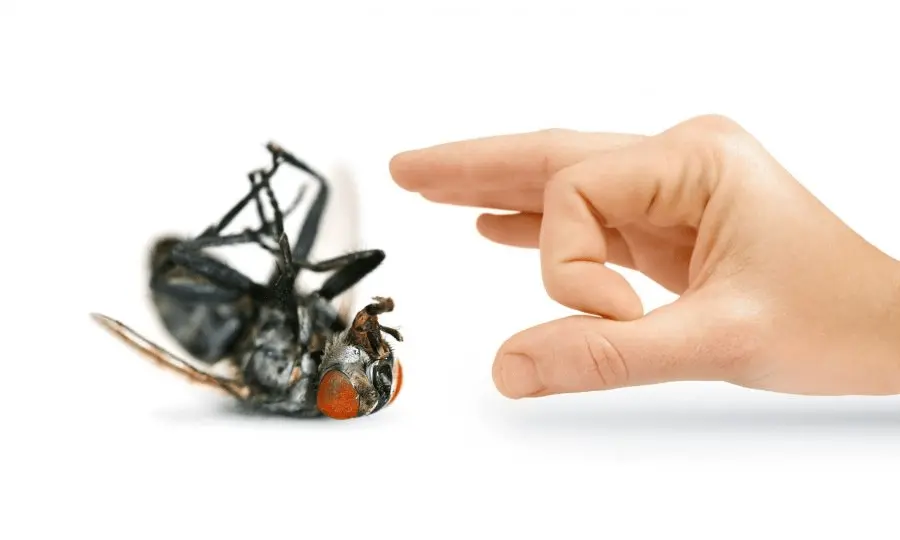Pests aren’t random invaders. They’re opportunistic organisms driven by very specific needs: food, water, shelter, and safety. Understanding these motivators is the key to controlling and preventing infestations—not just treating them after the fact.
From the smallest ant colony to the most elusive rodent nest, pest behavior follows patterns. And while human homes aren’t their original habitat, they’ve adapted remarkably well to the environments we create.
Let’s take a closer look at the science behind pest behavior—what insects and rodents are looking for, how they make decisions, and why even the cleanest homes are at risk.
The Four Motivations of Pest Activity
At the heart of all pest behavior lies a basic survival strategy shaped by evolution. Most pests are searching for one or more of the following:
1. Food
Pests have evolved to identify and locate food through scent, vibrations, temperature, and visual cues. From leftover crumbs under a kitchen appliance to open pet food bags, any organic material can be a trigger. Rodents can detect food odors from long distances, while cockroaches thrive in areas where food and moisture combine.
2. Water
Moisture attracts many pests. Termites need humidity to survive, mosquitoes breed in standing water, and silverfish prefer damp environments like basements or bathrooms. Even a dripping pipe can be enough to sustain an insect population.
3. Shelter
Pests need safe spaces to nest, breed, and avoid predators. Wall cavities, attics, crawl spaces, and cluttered garages provide perfect hideouts. Many pests are nocturnal, meaning they hide during the day and emerge when activity is low.
4. Safety and Reproduction
Insects and rodents seek environments where they can reproduce quickly and without disruption. A single bed bug, for example, can lead to hundreds within weeks under optimal conditions. Rodents build nests in areas where human activity is minimal, such as behind drywall or inside HVAC systems.
How Insects Think: Instinct Over Intelligence
Unlike rodents, which exhibit some problem-solving abilities, insects operate largely through instinct and hardwired patterns. Ants follow pheromone trails laid by others, while cockroaches scatter in response to vibrations or sudden light changes.
Bed bugs, despite being small, are highly adaptive. They’re guided by the carbon dioxide we exhale and body heat, which help them locate their hosts with surprising accuracy. They hide during the day and emerge at night, perfectly timed to feed without being detected.
Termites, meanwhile, use chemical signals to organize and operate as a colony. Workers, soldiers, and reproductives each have roles, and their collective goal is to maintain access to wood and moisture.
Understanding the underlying motivations of pests is crucial for effective management strategies. Insects and rodents are driven by basic needs such as food, water, and shelter, which often leads them into human environments. This knowledge is essential for developing targeted interventions that address these needs without causing harm to the ecosystem. For residents in urban areas, seeking professional assistance can be beneficial. For instance, those in Texas can explore pest control Dallas services to implement tailored solutions that align with the specific behaviors and habitats of local pests, ensuring a more harmonious coexistence with the natural world.
Understanding the underlying motivations of pests is crucial for effective management strategies. In urban environments like Naperville, where human activity intersects with natural habitats, pests often seek food, shelter, and optimal living conditions. This is where Pest Control Naperville becomes essential, offering tailored solutions to address the unique challenges posed by local pest populations. By focusing on the specific behaviors and needs of insects and rodents, these services can implement targeted interventions that not only eliminate current infestations but also prevent future occurrences. This approach ensures a harmonious coexistence between humans and the natural world, minimizing the impact of pests on daily life.
Rodents: More Than Just Instinct
Rodents, such as mice and rats, display more complex behaviors than most insects. They are curious, cautious, and capable of learning from their environment. This is why certain pest control strategies fail if not implemented properly.
Rodents remember paths, identify safe food sources, and avoid areas that previously posed danger. This behavior, known as “neophobia” (fear of new things), is why traps and baits sometimes go untouched. A successful pest control strategy must account for this learning curve.
Why Homes Are Ideal Habitats
Despite being artificial environments, homes satisfy all four core pest needs:
- Food: Kitchens, trash cans, food storage, and even pet bowls provide ample nutrition.
- Water: Bathrooms, leaky pipes, and poorly ventilated spaces offer moisture.
- Shelter: Homes are filled with dark, undisturbed areas perfect for nesting.
- Safety: Controlled climates and reduced predation make houses safer than the outdoors.
Seattle’s wet climate makes it particularly prone to moisture-loving pests. Regular pest control efforts in this environment must focus not just on extermination but on modifying the home environment to be less hospitable.
Behavior Triggers: Why Pests Suddenly Appear
Pests don’t appear without reason. Changes in behavior often correlate with environmental shifts:
- Weather changes: Heavy rain, droughts, or seasonal shifts push pests indoors.
- Construction or landscaping: Disturbed habitats force pests to relocate.
- New entry points: Cracks, damaged screens, or open vents invite intrusion.
- Improper storage: Leaving food or waste unsealed can invite a quick invasion.
Understanding these triggers helps homeowners stay one step ahead of infestations.
Behavioral Patterns You Can Use Against Them
Effective pest management is built on predictability. When you understand how pests behave, you can create environments that disrupt their cycles:
- Seal food and waste in airtight containers.
- Reduce moisture with dehumidifiers and ventilation.
- Eliminate clutter that could serve as shelter.
- Use light and vibration as deterrents in dark or quiet areas.
For termites, reducing wood-to-ground contact and fixing leaks can deter colonization. With bed bugs, regular inspections and mattress encasements can slow spread and detection time.
Prevention Is a Matter of Strategy, Not Just Cleanliness
Clean homes can still have pest issues. It’s not always about hygiene—it’s about access, opportunity, and environment. Even high-end properties deal with termites or rodents if the structure and surroundings support it.
Preventive pest control strategies should include:
- Routine inspections
- Physical barriers (caulking, screens, door sweeps)
- Environmental modifications (landscape design, moisture control)
- Monitoring systems like traps or detectors
Agile Pest Control supports homeowners by addressing not just the infestation but the underlying behavioral patterns that allowed it to happen in the first place.
Why Extermination Isn’t Always Enough
Killing pests without understanding why they appeared guarantees a return. The real solution is behavioral disruption—removing the triggers and opportunities that sustain their presence.
A skilled exterminator doesn’t just eliminate; they educate. They interpret pest patterns, assess environmental factors, and implement solutions that make homes less attractive to invaders.
That’s why residents looking for long-term pest control benefit from working with experienced providers who focus on both prevention and extermination.
Conclusion: Outsmarting the Invaders
Pest behavior is not random—it’s strategic, evolutionary, and alarmingly efficient. By understanding what pests want and how they think, homeowners can make smarter decisions and build defenses that work.
From termite control strategies that account for colony behavior to bed bug monitoring that aligns with feeding cycles, the science of pest behavior is a valuable ally.
Companies like Agile Pest Control use this science to stay ahead of infestations. They don’t just react to pest presence—they anticipate it, decode it, and disrupt it before it becomes a crisis.
If knowledge is power, then understanding pest behavior is the strongest tool in any homeowner’s pest prevention arsenal.


